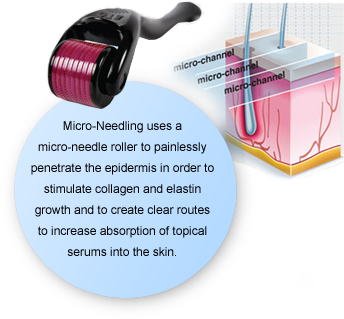What are Stretch Marks?
Stretch marks are a form of skin scarring and are usually associated with weight gain or rapid weight loss. It is also a common complaint women experience after they have given birth; the marks are caused by the dermis layer being torn as it is stretched. The marks usually look reddish to begin with, but can fade down to a silver colour and do not disappear. Tanning can help hide them, but if they are severe, even this will not be enough to disguise them.
Where do stretch marks occur on the body?
Stretch marks can occur anywhere on the body. However they tend to be more common on the abdomen, breasts, upper arms and underarm area, as well as the thighs, buttocks and hips. This is because these are the main areas where fat gets stored.
What causes them?
It is not just the stretching process of the skin that is responsible for stretch marks. Glucocorticoid hormones in the body can prevent the fibroblasts in the skin from forming collagen and in turn this means that the skin is less elastic. As a result, it is not as capable of handling the greater forces of being stretched and the dermis and epidermis layers begin to tear.
Can stretch marks be reversed?
There are a number of treatments that can help to reduce the problem; they range from creams and oils, all the way to laser treatment for stretch marks. Thérapie Clinic use micro-needling treatment to stimulate collagen and elastin growth which will help reduce the appearance of stretch marks.
Laser stretch mark removal
One of the newest forms of laser treatment for stretch marks is known as fractional laser resurfacing. It uses a scattered pattern of light to treat only small sections of the affected area during each treatment. The laser creates micro wounds in the skin and this in turn prompts the skin’s natural healing to start. The skin then produces new collagen, resulting in the appearance of the marks being improved by up to 75% over the course of the treatment. Thérapie Clinic can offer you support and advice on how to deal with stretch marks, as well as advising which treatment will be most suitable for you.
Surgery as an option?
There is no surgical procedure for getting rid of stretch marks; however a tummy tuck could be performed to remove lower abdomen marks.
Creams and oils
There are many creams and oils on the market that either claim to prevent or reduce stretch marks. Most will only have a limited effect on existing marks, if any at all. However, products claiming to prevent stretch marks can sometimes reduce the amount or severity of the marks. Cocoa Butter is commonly claimed as being able to help prevent stretch marks. In studies and tests there has been no significant difference between those that used it and those that did not.
If you decide to use a cream or oil to help prevent stretch marks do your research on the available options before purchasing. Read up on all the ingredients to see how they are supposed to help prevent the marks from forming.
Micro-needling for stretch marks
The treatment introduces fine needles into the skin to create microscopic channels. In doing so the dermis is encouraged to produce new collagen and elastin which generates new skin cells to repair itself. The skin then becomes thicker, plumper and more youthful. Serums that are applied to the skin afterwards are also up to 1000 more effective as the pores on the skin are opened and the product is absorbed deeper into the skin.

Micro-needling uses a micro-needle roller to painlessly penetrate the epidermis in order to stimulate collagen and elastin growth and to create clear routes to increase absorption of topical serums into the skin.




